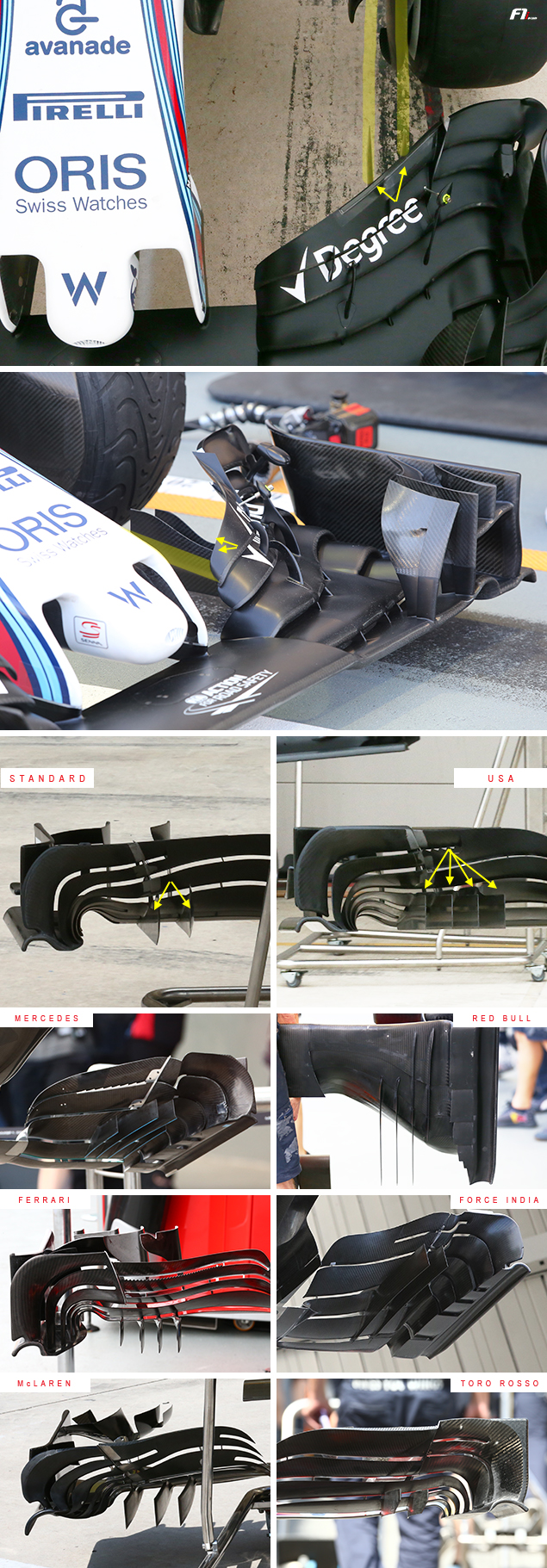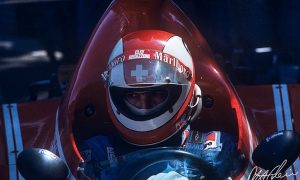Nicolas Carpentiers’ technical review of last weekend’s United States Grand Prix features pictures and explanations of the novelties and concepts spotted at COTA.

WILLIAMS NOT SITTING ON THE FENCE
Williams chief technical officer Pat Symonds recently admitted the FW38’s front wing had not yielded the expected gains, which partly led to the British team’s slide in the pecking order, though other factors have also come into play.
Williams tested an “experimental” front wing in Austin, with an eye already cast towards 2017’s planned regulation changes and checking whether windtunnel results correlate with on-track data. The wing’s main board has gained a pair of fences, a two-fold increase compared to the previous layout (see yellow arrows).
Coming in different numbers, these aero elements line up on the inside of the tyre and serve to guide the air flowing under the front wing. A vortex is created on the edges of the fences, which splits the air flowing below the car from the turbulent wake coming off the rotating wheels, also known as tyre squirt.
In other words, the fences shield the main airflow from the dirty air. Without these elements, the front wheels would release a bigger amount of unstable air under the car, which would ultimately hurt the downforce generated by the floor and splitter. 2017-spec tyres will increase 60mm in width at the front, thus creating more turbulent air that teams will have to keep under control.







